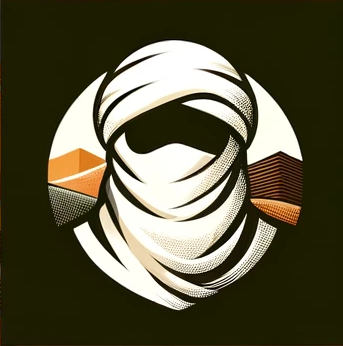Web search is failing me for a primary source under the deluge of web/pop culture fascination with katanas, but I swear I’ve read that their primary killing tool in battle was the Yumi bow, usually fired from horseback.
Guns displaced every warrior-caste from multiple different societies; the samurai held on to power through arms control first for swords, then later guns once the colonial powers forced Japan to end its self imposed isolation.
Bows (or other projectiles) and spears ruled the battlefield in Japan and everywhere else on the planet when combat was primarily hand to hand. Sometimes there were situations where swords or maces and other close in weapons had the advantage, but in general killing someone from a distance with a weapon that could be primarily made of wood and relatively simple is just going to be the most commonky used tool of war.
Romans, known for the gladius short sword, would initially start combat with slings, javelins, and spears. They only switched to swords up close. Same for samurai.
primarily made of wood and relatively simple
Also, less maintenance/ material required for its creation.
A spear point with a couple of langets is something a blacksmith can knock out by the hour. Good swords take longer and are more technical to make. You break your spear shaft in training? Well tough as, but you can find a suitable replacement and remount it on campaign.
a spearhead can also be a dagger in an emergency, which is a nice extra.
The sword has always been the last option as a weapon. Like a handgun would be today. A spear would always be preferred.
Even more than that, while we think of the gladius as their iconic weapon, the only weapon that served for the entire history of the Roman military is the bronze spear, though it eventually became ceremonial.
Swords are flashy and the weapon of a noble in town, as they’re expensive, high skill, and a reasonable sidearm for relative safety. They weren’t replaced in function by the rifle, but by the pistol. This is actually quite similar to the mindset of revolvers in the American west. The primary armament of that period’s conflicts was the lever action rifle, but the revolver was better in town.
Don’t forget the Plumbata!
Nobunaga is literally the most successful of the Japanese warlords because he looted a Spanish merchant vessel and obtained guns and powder.
Then he did everything possible to get more.
This narrative that evil Europeans forced them to use guns is absurd.
It’s more that guns were hard to get until the British and Americans forced Japan to open its borders. They were generally imported through the Spanish/Portuguese, or the Dutch after they established trade relations. Even after they started making their own matchlocks, I believe they were only produced in small batches due to the high percentage of impurities in Japan’s iron deposits.
Fuck nanban trade ports. All my homies hate Christianity.
You’re right, that last sentence was ham fisted - I was referring to the gunboat diplomacy opening the trade free for all after decades of isolation, not colonial annexation.
I too have watched batosai the manslayer.
I’ve heard that as well about the bows.
It’s rather complicated. In the “in-between” times, firearms were considered a coward’s weapon, making the user a “sniper” and thus less honorable than those who used more traditional arms. This faded with time however, as most ideas do.
This faded with time however
Yeah, because the people that thought that way got fucking shot.
“what’re you going to do, coward? shoot me?”
- Man who got fucking shot
Also because they became more accurate and more skill dependent. Early guns were just RNG. That’s why muskets were most useful fired in barrages.
Words of wisdom
The Pope tried banning crossbows
In latin languages it’s even called “besta” to indicate it’s from the beast (Satan)
Bro American Sniper was a fucking badass film. No politics or anything. Just a guy shooting terrorists.
Bro really called “just a guy shooting terrorists” apolitical
It has the same quality as that nazi propaganda sniper movie from inglorious basterds. Just different insignias
Wow. That’s such an unhinged viewpoint.
I just hate military propaganda with passion
Showing all these cringy hero scenes with lofty music black hawk down etc. We are the good guys, heroes and all that horseshit.

Meatbag
Correction, you are a bag of meat
I’m more of a p-o-t-a-t-o guy myself
Explanation: It’s just that… you have all these squishy parts, master. And all that water! How the constant sloshing doesn’t drive you mad, I have no idea. HK-47
Longbow was the main battle weapon of samurai. Even after firearms, which they got the peasants to stand in a line and fire volleys just like in the West.
Reading your links, the correction you made seems semantically insignificant. Yumi is the word for “bow” in Japanese and longbows describe bows that are long. Longbows are not unique to the English, and there are a lot of bows that can be described as longbows. So my point is, if samurais used yumis that are long (which some did) then saying they used longbows is not incorrect. Nevertheless, thank you for letting us know what the Japanese called their bows, it was educational.
As someone who did archery at national level… Your comment is triggering my need to point out how difficult and different “longbows” are.
I couldn’t handle it after years of playing. The term longbow in archery is as calling everything AR15.
Well, a lot of rifles are called AK47 even though most of them are not.
According to the media, every gun is either an AR-15 or a Glock.
Depends on the media I guess, because every gun is literally AK.
That’s pretty cool that you did archery at a national level.
Respectfully, I still think that I am correctly interpretting the information on the Wikipedia links sourced above. I’m basing my conclusion off two pieces of evidence. The longbow wiki page linked above mentions that longbows existed in “many cultures”, and there is a separate Wikipedia page for the English Longbow. This pushes me to conclude that there is a symantical difference between the two terms, “longbow” and “English Longbow” though many people assume the latter when the former is mentioned.
I think that’s an English thing because they’re still celebrating Agincourt.
Yeah, MIT prefers pistol dueling for its Certification of Piracy
Yes, there have been bows that are long, but not like the longbow. As you say, the longbow was used to shoot volleys, while the yumi could also be used on horseback. The longbow had a very heavy draw weight, around 90-120 lbs. That’s the weight you have to pull to get it at full draw. The yumi possibly had a a lower draw weight (although Korean and Mongolian and Turkish composite bows had draw weights of around 100 lbs as well, and they were mainly used on horseback). Again, the yumi has a shorter lower limb which meant it could be used on horseback (and it was) while there is no way a longbow could have. So the longbow and the yumi are very different technically.
Very interesting indeed. Thanks for sharing. I’m just pointing out that people are assuming “English Longbow” when saying “longbow”. Which, to be fair to these folks, the English Longbow is likely the most famous longbow in history. Nevertheless, even the Wikipedia page sourced above mentions that longbows existed in “many cultures” and there is a separate Wikipedia page for the English Longbow. This pushes me to conclude that there is a symantical difference between the two terms, “longbow” and “English Longbow” though many people assume the latter when the former is mentioned.
Yumi (弓) is the Japanese term for a bow.
used in English, yumi refers more specifically to traditional Japanese asymmetrical bows, and includes the longer daikyū (大弓) and the shorter hankyū (半弓) used in the practice of kyūdō and kyūjutsu, or Japanese archery.
Used in English it’s some weebshit, don’t try to deny it
No, every language does similar things about loads of similar shit.
You are just annoyed that you didn’t think of reading beyond the first sentence, lol.
I’ve actually read the whole article before. I was a weeb once…
Yojimbo should be required viewing.
Seven Samurai too, although less central
Yeah they were soldiers. Alexander the Great had engineers in his army for a reason. Genghis Kahn would lose his shit over a magnum gun.
Depending on the era, they were rich thugs who could and would slice a homeless person in half for looking at them wrong.
War never changes
Genghis Khan would love M114 howitzers.
Genghis Kahn would love the Toyota hilux. The modern technical is endowed with his spirit of “let’s make the real shit of war more mobile”
Genghis Kahn would love the Tuk-Tuk Boom-Boom
Send in the fleet of Ford Pintos!
The ancient call to hop into your Hilux and go raiding and pillaging some villages
Only problem is you can’t eat a Hilux when the going gets a little too tough.
but then what would Spike TV show in the place of Deadliest Warrior?

















